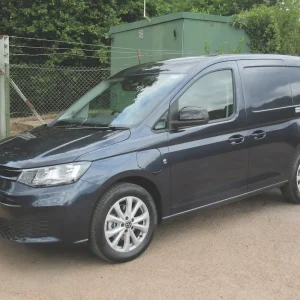Fiat has stolen a march on the competition with the XL because there is no other product in the light van segment that can match its outsize dimensions, which are on a par with many standard- bodied medium-sized vans, including the L1H1 versions of its own Scudo.
The high-roofed and long- wheelbased XL version of the Doblo Cargo boasts a load volume of 5.0m3, comfortably beating the standard derivative’s most spacious cargo space of 4.2m3, which itself matches the biggest boxes offered elsewhere by the likes of the VW Caddy and Vauxhall Combo. But considering the Combo is a re-badged Doblo Cargo (the pair were joint winners of the What Van? Light Van of the Year prize for 2013) it may not be long before it also gets an expanded load bay. The XL’s one-tonne payload equals the heaviest available in the Doblo Cargo line-up too.
Despite maxing out on space the Cargo XL is not inelegant,
with the high roof integrating smoothly into the body. The cargo space is accessed through full-height twin rear doors as well as sliding doors on both sides of the van. These, however, do not extend to the top of the roof, so some stooping is required for person of average height when loading and unloading. The interior offers six tie-down hooks to secure loads but there was no ply lining in our van to protect against scratches and scuffs.
The Cargo XL is available with three Multijet diesel powertrains: a 135hp 2.0-litre version, a 90hp 1.6 MTA unit and the lively and responsive 105hp 1.6 engine we opted for, which combined well with six-speed manual transmission.
We tested the SX trim level van that provides features not available with the standard trim vehicle, such as remote central locking, fog lights, a useful storage space in the passenger seat cushion and a better sound system with an iPod connection thrown in.
We also got a height-adjustable driver’s seat with lumbar support, but it seems a bit mean that height adjustment at least does not come as standard. The useful storage shelf above the windscreen is a standard fit, though, and the soundproofed bulkhead on the SX contributes to a quiet ride, which is made agreeably smooth by Fiat’s bi-link rear suspension. Meanwhile, the XL is nimble about town, which will appeal to potential downsizers.
Our test van had a basic price of £16,465, excluding VAT, but was well endowed with options such as automatic climate control (£795), Blue&Me multimedia pack (£445), ESP (£375), side airbags (£295), metallic paint (£245), passenger airbag (£175), cruise control (£135), anti-whiplash front head restraints (£105) and leather steering wheel and gear knob (£95). It would be good to see the ESP, in particular, fitted as standard.
The efficient stop/start system was an extra £225 and the extremely useful rear parking sensors added £185.





